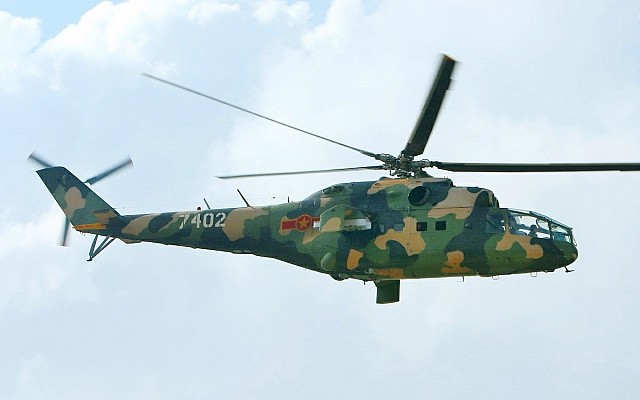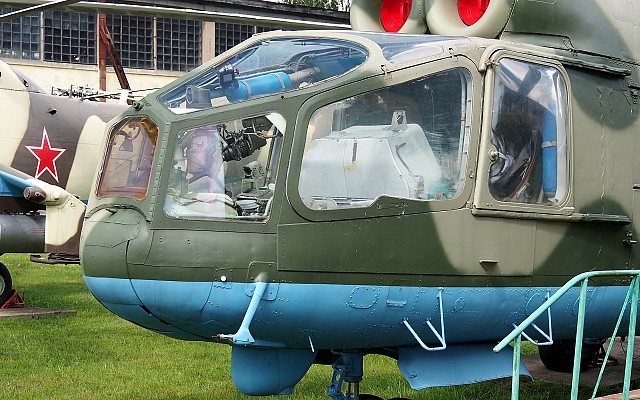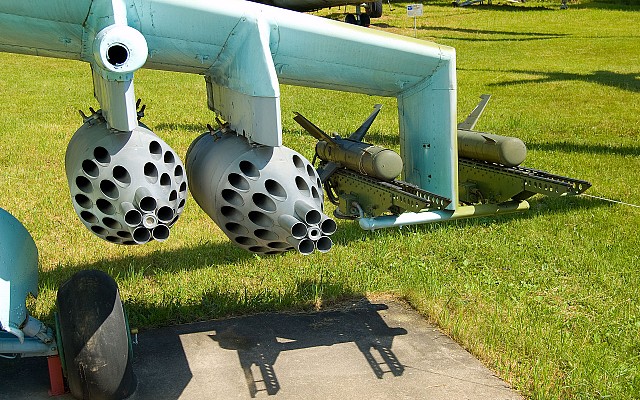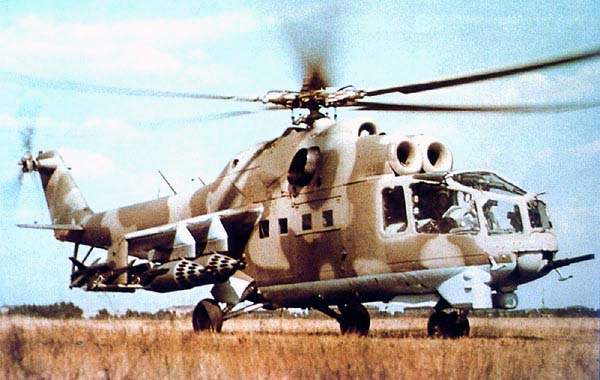Mil Mi-24A
NATO: Hind-A
Overview

Mi-24
A Mi-24 Hind-A in a museum. Note its large glass cockpit.
Source: www.airforceworld.com -
© Copyright lies with original owner
1970 -
Small number of Mi-24U
10 or more prototypes
Izdeliye 245 (article index for Mi-24A)
Izdeliye 244 (article index for Mi-24U)
Vietnam
Variants

Mi-24A
Mi-24A (NATO: Hind-A) attack helicopter on display in a museum in Russia. Note that the A-12.7 machine gun is missing from this example.
Source: Alf van Beem -
© Public domain
List of prototypes
List of production models

Mi-24
One of the Mi-24 prototype models (NATO: Hind-B) in flight. Note the lack of A-12.7 machine gun, lack of wingtip missile launch rails, shorter cockpit and different angle of the stub wings.
Source: www.airwar.ru -
© Copyright lies with original owner
Details
Media
Armament options
Note: incomplete list
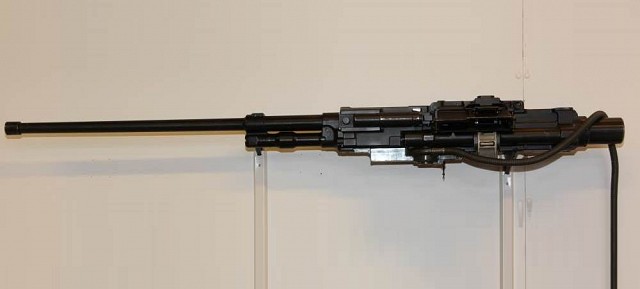
Afanasev A-12.7
The Mi-24A features an A-12.7 heavy machine gun in a NUV-1 nose mount.
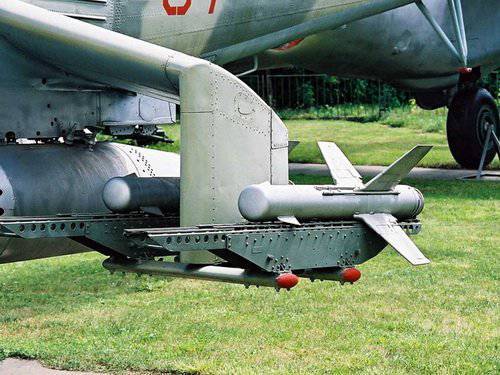
2K8 Falanga
The Mi-24A with K-4V armament subsystem could be fitted with two launch rails on each outer pylon for the MCLOS guidance 9M17 Falanga-M (NATO: AT-2B Swatter-B) anti-tank guided missile.
Related articles
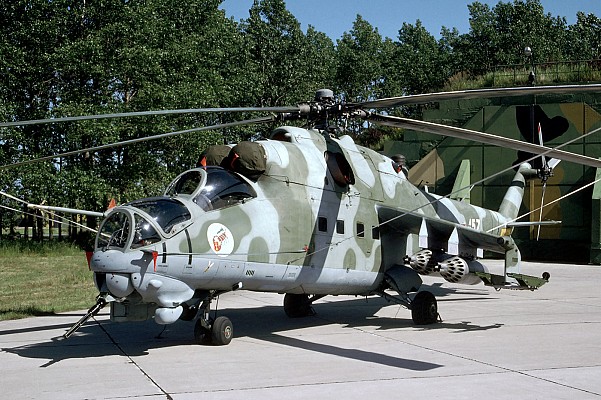
Mil Mi-24D
The Mi-24D is the successor to the Mi-24A. This features the distinctive double bubble canopy and improved armament suite.

Mil Mi-8T
The Mi-24A was derived from the Mi-8T transport helicopter. Early model Mi-24A even feature the starboard facing tail rotor.
